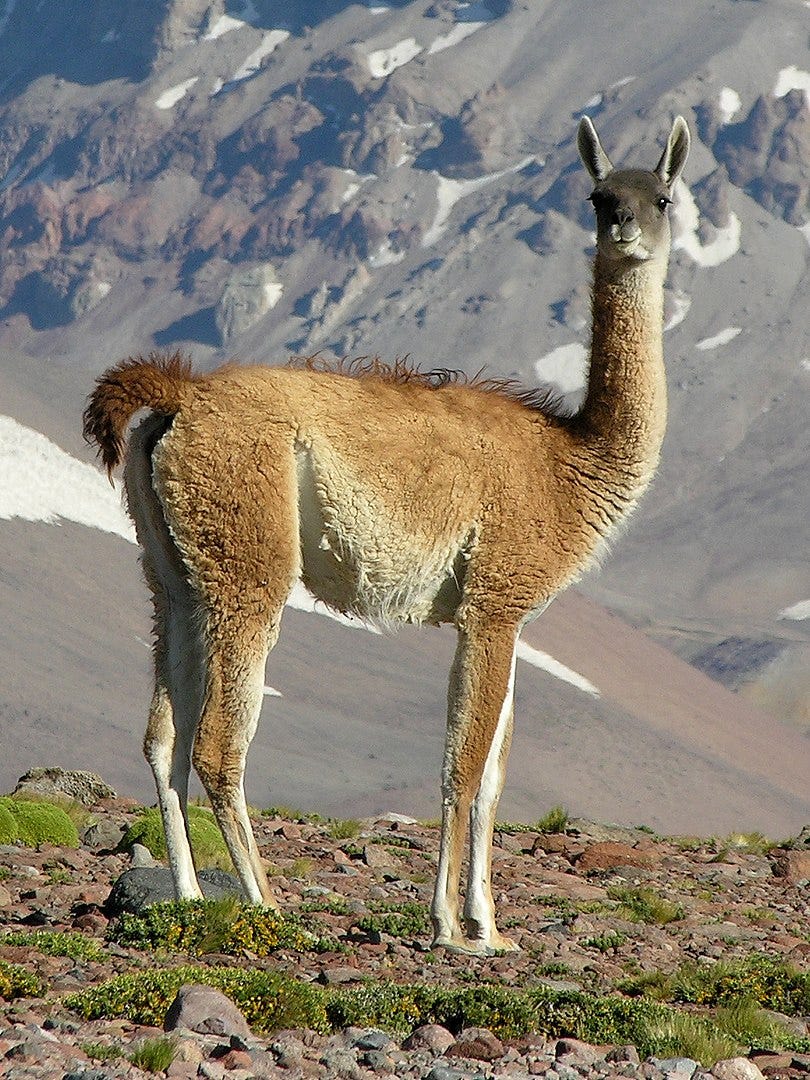6 March 2023. Work | Animals
How Britain’s four-day week pilot turned out. // Climate change is increasing conflict between humans and animals.
Welcome to Just Two Things, which I try to publish three days a week. Some links may also appear on my blog from time to time. Links to the main articles are in cross-heads as well as the story. A reminder that if you don’t see Just Two Things in your inbox, it might have been routed to your spam filter. Comments are open.
1: How Britain’s four-day week pilot turned out
I’ve been meaning to write here for some time about the British six-month pilot of the four-day week, because it involved a decent number of firms across a reasonable spectrum of the economy.
I was also lucky enough to hear a first hand account from one of the organisations involved in the trial when I was in Cardiff last month, and I’ll share some of that further down.
The headline results are reasonably impressive. 0f the 61 companies that took part, 56 are extending four day working. 18 of these have made the pilot permanent.
The assessment of the pilot draws on various data from the companies that were involved, and interviews carried out before, during, and after the pilot period.
Some of the most extensive benefits of shorter working hours were found in employees’ well-being. ‘Before and after’ data shows that 39% of employees were less stressed, and 71% had reduced levels of burnout at the end of the trial. Likewise, levels of anxiety, fatigue and sleep issues decreased, while mental and physical health both improved.
Of course you would expect that employees would benefit from a shorter working week, but the business data is good too:
Companies’ revenue, for instance, stayed broadly the same over the trial period, rising by 1.4% on average, weighted by company size, across respondent organisations. When compared to a similar period from previous years, organisations reported revenue increases of 35% on average – which indicates healthy growth during this period of working time reduction.
Companies also benefitted from much higher staff retention rates over the pilot period.
Some of the reasons for this success might be because each organisation designed its own approach to the four day week, to fit their own culture and their own business requirements. This meant that there were different types of four day week being trialled, as the full report discusses:
Fifth day stoppage: the business closes for an extra day
Staggered: different people take different days off
Decentralised: different departments have different models, depending on their operational requirements
Annualised: the four day week is averaged across the year—in a seasonal business such as a restaurant
Conditional: the four day week is dependent on teams or departments meeting certain KPIs.
(I’m not sure that the last one is going to work that well, as I’ll suggest later on.)
One other quick insight from the report: some of the companies that took part did so because they were fairly sure that the four-day week will be everywhere within a decade, and they wanted to learn about it first:
A 2022 employer survey by the CIPD (UK’s Chartered Institute of Personnel and Development) found that 34% of respondent organisations thought the four-day week will be a reality for most UK workers during the next ten years. This is consistent with the feeling among senior managers we interviewed, who saw the pilot as an opportunity to be at the forefront of historical change. We were also commonly told that putting oneself forward as a pioneer maximises the competitive advantages of having a four- day week, such as its benefits for reputation, recruitment and retention.
Of course, the fact that the data is in, and that the researchers include some very credible academics, has not prevented some of the uninformed from wading in. The Conservative peer Howard Leigh was quoted in the Guardian;
the policy would have a “devastating effect” because it would be “difficult for colleagues to work effectively if some are just not available for 20% of the time”.
The chance to hear what this sounded like from the perspective of one organisation was also revealing. Ruth Llewellyn is the HR Director of Merthyr Valley Homes, a co-operative which employs around 250 people and looks after the former council housing stock in and around Merthyr Tydfil, which is one of the poorer parts of the Welsh valleys. It is is “Wales’ first tenant and employee mutual housing association”.
(Merthyr Tydfil. Image: Merthyr Valley Homes.)
They went for what she described as a 100-80-100 model for the four day week, meaning 100% of pay, 80% of hours, and 100% of productivity, measured by a set of client outcomes.
They also had two clear ground rules for proposed changes:
No detrimental effect on tenants, stakeholders, or other departments
No more money
They opted for a decentralised model to do this—their tradespeople have different working requirements from their service staff. But importantly, they asked each of the departments to work out for themselves how to get to 80% of their hours. The result seems to have been a bonfire of inefficiencies, such as over-complex approval processes that created extra work and other delays, or doing an initial consultation about a repair on the phone rather than driving out to see it.
There were also some new ways of collaborating better within teams, such as shared mailboxes, better meeting time management, and some technology improvements that improved productivity (such as electronic surveying equipment).
Obviously they could have made some of these changes before, but Ruth Llewellyn was clear that the promise of the four-day week was enough of an inducement for most people to take ownership of their working processes.
The indications so far are that they have achieved their productivity goals, and the impact on staff has been good: stress is down, burnout is down, turnover intention is down, mental health outcomes are up, and physical health is up.
Merthyr Valley Homes is one of the organisations that has extended the trial, because they want to see it run for a full year before making a final decision. Some of their demand is seasonal. But she also saw it as a way to be leader in terms of being a good employer, with social goals, which was also likely to improve recruitment and retention.
And let’s face it: given how poor productivity is in the UK, there must be ways to improve it everywhere. If that involves giving people more time, that also works. Certainly, from the report, only a handful of those involved in the trial didn’t want it to continue:
In general, cohort employees had an excellent experience of the four-day week trial. From 0 (very bad) to 10 (very good), the average score was 9.04. When asked whether they would want to continue with the four-day week trial, 90% replied ‘Yes/Definitely want to continue’. Only five people (0.43%) said that they ‘somewhat do not want to continue’, and no one reported that they ‘definitely do not want to continue’.
2: Climate change is increasing conflict between humans and animals
There’s a report in Inside Climate News that animals—especially large mammals—and humans are coming into conflict more frequentlybecause of climate change and other anthropogenic change. The most recent source for this is a paywalled article in Nature, (abstract here) and it is the second such study to appear in a month.
The Nature study is a large-scale meta-analysis of available research, over 30 years and across every continent except Antarctica. The researchers described it this way:
Climate change is a critical yet underappreciated amplifier of human–wildlife conflict, as it exacerbates resource scarcity, alters human and animal behaviours and distributions, and increases human–wildlife encounters. We synthesize evidence of climate-driven conflicts occurring among ten taxonomic orders, on six continents and in all five oceans.
The Inside Climate News account of this work is a bit less dry:
in just 30 years, the killing of polar bears by humans tripled in Canada, the number of whales that became entangled in fishing gear rose 400 percent, shark attacks on humans jumped 360 percent and deadly encounters generally increased in several countries, including Nepal, Tanzania, Mexico, Kenya and South Sudan.
Climate change is the main driver of all of this, although it’s not the only driver:
shifts in temperature and rainfall, both short-term extreme weather events and long-term changes to the climate, were the most common drivers of human-wildlife conflicts, cited in more than 80 percent of the case studies its authors examined.
(Guaconos. Via flickr. CC BY-SA 2.0)
The way this works in practice is two-fold. The first is that declining food supplies force animals to hunt closer to human settlements, as is the case for polar bears in the Arctic as the sea ice dwindles. But the other is that climate shifts increase animal populations in some areas. In Chile, guanacos (similar to llamas and alpacas) are competing with livestock for resources. The problem is most acute where climate change effects are exacerbated by agricultural development. The area of the national park at the foot of Mount Kilimanjaro is an example of this:
As more people have moved into the region, my colleague Georgina Gustin reported , they’ve fenced off their farms and ranches, in part to protect their property, crops and livestock from predators and grazers searching for food. But this has choked off ancient migratory routes or paths to watering holes that some animals have used for decades or more, while also shrinking the area of pasture available to them. The result is that wild animals, notably elephants, are now breaking down fences and gorging on crops, often leading to deadly consequences for both humans and wildlife.
As it happens, this issue was recognised in last year’s COP15 talks on biodiversity, which I wrote about here. The agreement includes a global target “to minimize human-wildlife conflict,” although the details are still to be worked out. And the devil, of course, is always in the details.
Inside Climate News mentions a recent piece by Alexandra Zimmerman in The Conversation, who argues that the real problem here isn’t between the people and animals, but between different people with different worldviews. (She doesn’t put it quite like that, but that’s what she means.)
For example, although wolves can and do occasionally kill sheep in Europe and North America, conflict primarily arises between those who want to cull wolves and those who want to protect them... (R)esolving conflicts about wildlife is not a simple matter of installing fences, lights or noisemakers to keep animals away from crops, property or livestock. Resolving human-wildlife conflicts means resolving divisions and disharmony between people.
j2t#433
If you are enjoying Just Two Things, please do send it on to a friend or colleague.





